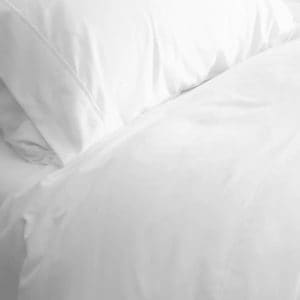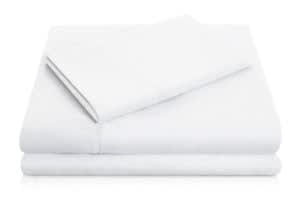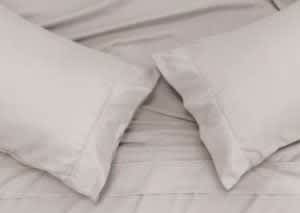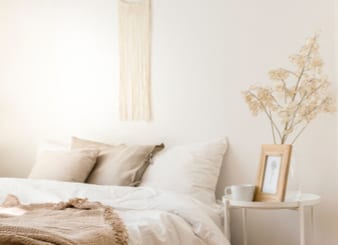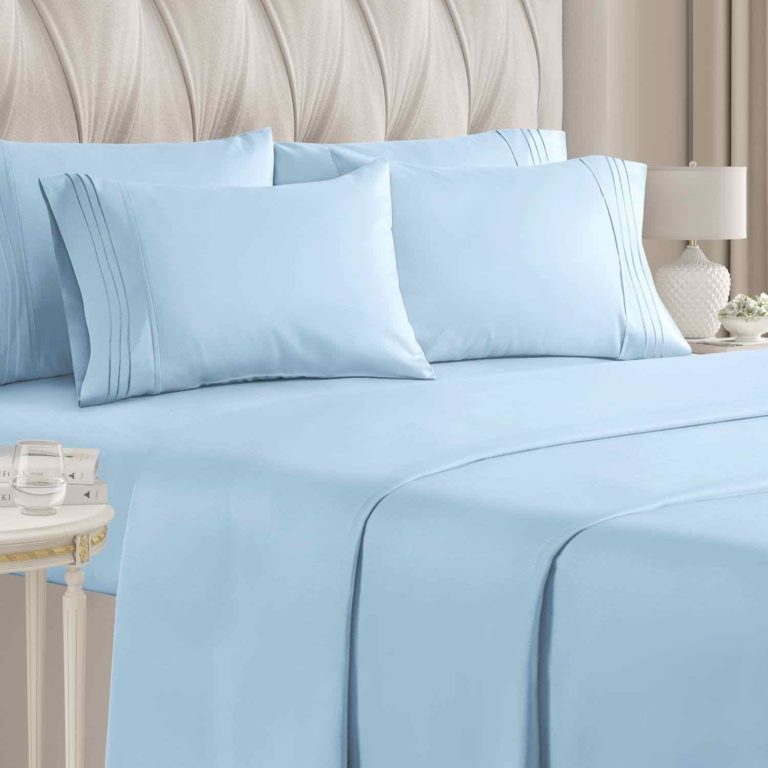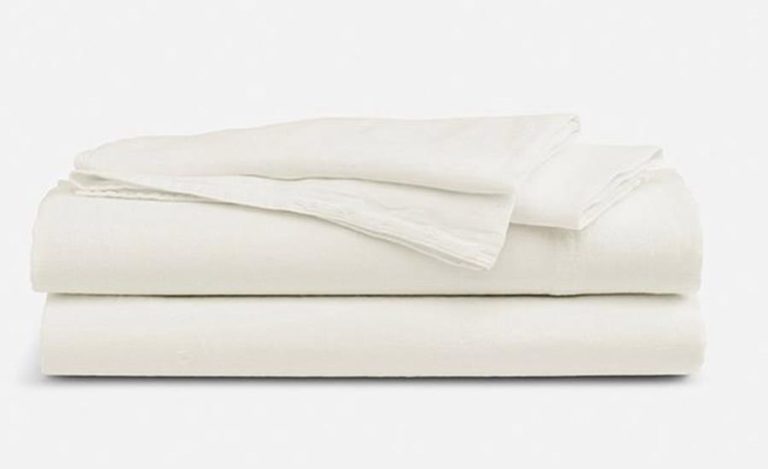When you buy through our links, we may earn a commission. Products or services may be offered by an affiliated entity. Learn more.
Best Microfiber Sheets
Microfiber sheets offer excellent value for money, boasting many of the qualities of more expensive materials at a fraction of the price. This synthetic material is woven with ultra-thin fibers that give it superior durability and a smooth feel that rivals silk.
Microfiber sheets don’t have the long history of cotton or linen sheets, but they are rapidly gaining popularity from customers who appreciate having an alternative to cotton and linen. If you’re looking for a budget-friendly sheet set that’s comfortable and easy to wash, microfiber may be your new best friend.
We’ll go into the properties of microfiber and how these influence the feel. We’ll also share our top picks and provide some recommendations on how to choose the best microfiber sheets for you.
In-Depth Reviews
Best Overall
Bear Sheets
Use this SleepFoundation.org link for the most current discount on Bear sheets
Shop Now
Price
$110
Material
Microfiber
Weave
Microfiber
Sleepers who want a microfiber sheet set with a luxurious feel should consider Bear Sheets. This high-quality microfiber fabric has the smooth feel of silk without the price tag that often accompanies luxury sheets. While many microfiber sheets can sleep fairly hot, Bear combats this issue by using finely woven threads that feel lightweight and airy.
This set has an affordable price-point, especially when considering its quality materials and craftsmanship. Shoppers with very high-profile mattresses will find this set suitable, as the fitted sheet is designed to fit models up to 18 inches tall. The sheets are available in six sizes, including California king. They come in one color, standard white.
You can wash your Bear Sheets easily using cold water and tumble drying on low. Bear recommends removing the sheets quickly from the dryer to prevent wrinkling. Shoppers in the contiguous U.S. qualify for free shipping as well as a 30-night sleep trial. Bear backs its sheet set with a 1-year warranty that protects against manufacturing defects.
Best Value
PeachSkinSheets Classic Sheet Set
Use this SleepFoundation.org link for the most current discount on PeachSkinSheets sheets
Shop Now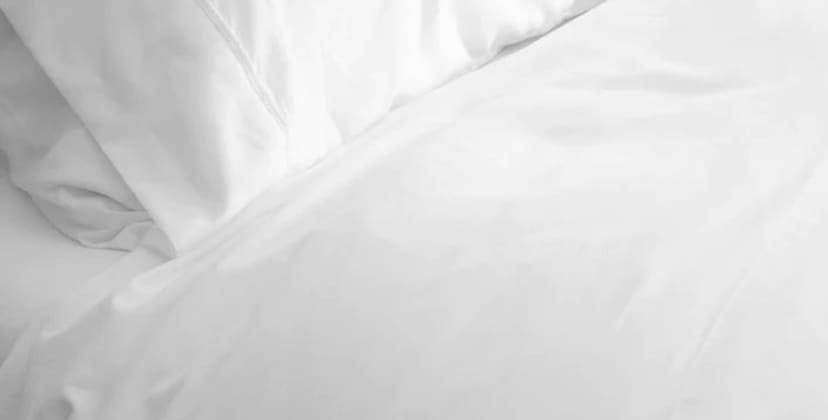
Price
$150
Material
100% polyester
Weave
Percale
Sleepers looking for microfiber sheets to use throughout the year should look no further than the PeachSkinSheets Classic Sheet Set. Our testing found the cozy microfiber in a lightweight design insulated adequate warmth for our cold sleepers without causing the hot sleepers on our team to overheat.
The sheets are made from polyester Smart Fabric engineered for breathability and moisture-wicking. This is paired with a crisp percale weave that enhances the material’s cooling properties. Thanks to this combination, we recommend the sheets to anyone who tends to overheat or sweat at night.
The sheet set comes in all standard sizes, and you can choose a split king size with two fitted sheets if you own an adjustable bed. The fitted sheet is compatible with mattresses up to 18 inches thick. Every item in the set is machine washable for easy care.
You can choose between 23 colors, ranging from neutrals to bright red, blue, and orange. PeachSkinSheets offers a 30-day guarantee, during which you can return the sheets for a full refund minus shipping costs. The Classic Sheet Set is backed by a 1-year warranty against structural defects.
Most Comfortable
PlushBeds Brushed Microfiber Sheet Set
Use this SleepFoundation.org link for the most current discount on PlushBeds sheets
Shop Now
Price
$249
Material
Brushed microfiber
Weave
Microfiber
The PlushBeds Brushed Microfiber Sheet Set is a higher-end option with a luxurious, velvety feel for sleepers who tend to run cold at night. Shoppers with high-profile mattresses should also appreciate the generous 18-inch pocket depth.
Every item in the set is made with brushed microfiber that resists wrinkling, pilling, and shrinking, even after multiple washes. The fabric is lightweight and drapes close to the body to insulate warmth. Nine size options are available – twin, twin XL, full, queen, split queen, king, split king, California king, and split California king.
Depending on the size you choose, standard sizes come with one flat sheet, one fitted sheet, and one or more pillowcases. Split queen, split king, and split California king purchases come with two fitted sheets. Each fitted sheet features a thicker elastic to ensure it is tightly secured to the mattress. Sets are fully washable in household machines. Wash in warm water on a gentle cycle and rinse in cold water. Although the sheets resist wrinkling, immediately removing the sheets from the dryer is recommended.
PlushBeds ships free to the contiguous U.S. Customers can return unopened and unused sheets only for the cost of shipping. Brushed Microfiber Sheet Sets are backed by a 3-year warranty.
Softest
Linens & Hutch 6-Piece Essential Sheet Set
SleepFoundation.org readers get 60% off select products at Linens & Hutch with code: SLEEP60
Shop Now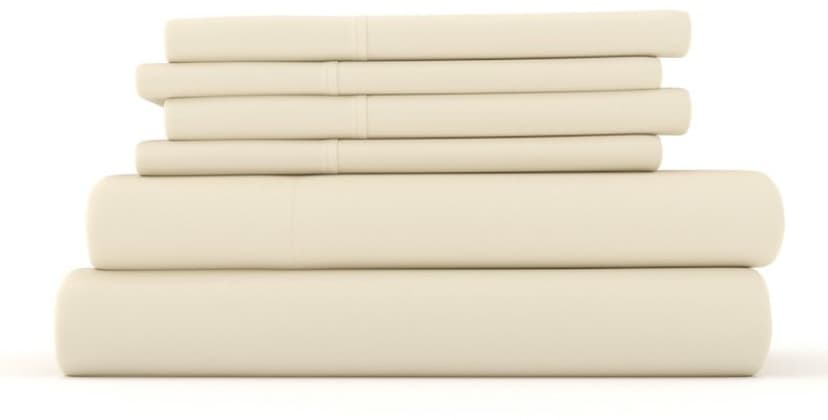
Price
$96
Material
Brushed microfiber
Weave
Microfiber
The 6-Piece Essential Sheet Set from Linens & Hutch is a standout option for shoppers who want durable yet comfortable sheets. The double-brushed microfiber fabric has a soft, slightly velvety hand-feel. This set’s grams per square meter (GSM) is 95, which means the fabric is densely woven and likely to last without significant pilling.
Shoppers looking to complement their decor will be pleased with this set’s wide variety of available colors. There are 16 different color options including bright and bold hues along with classics like white and ivory. The fitted sheets have a 16-inch pocket depth that fits standard and high-profile mattresses alike.
An advantage to using microfiber sheets is the low-maintenance care, and the Essential Set is no exception. You can wash these sheets in cold water and tumble dry on low. The sheets are intended to resist wrinkling and color fading. Sleepers with sensitive skin will appreciate that the microfiber fabric is engineered to be hypoallergenic.
You can purchase the Essential Set in six standard sizes that each have a budget-friendly price-point. Linens & Hutch offers free shipping and a 101-night sleep trial to qualifying shoppers.
Best All-Season
Jennifer Adams Lux Sheet Set
Use this SleepFoundation.org link for the most current discount on Jennifer Adams sheets
Shop Now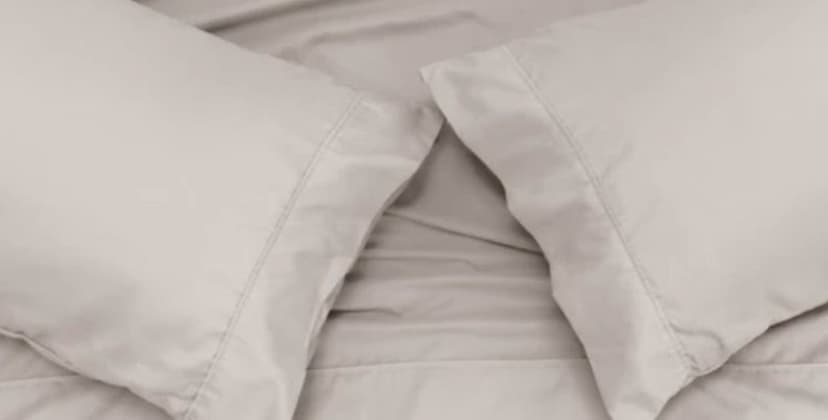
Price
$182
Material
100% polyester microfiber
Weave
Microfiber
Every item in the Jennifer Adams Lux Sheet Set is enzyme-washed to enhance the microfiber fabric’s softness and reduce wrinkling, resulting in an exceptionally smooth feel. Most of our testers felt comfortable on these sheets, including those of us with sensitive skin.
Microfiber sheets can often run warm, but the sheet set’s lightweight feel regulated temperature quite well during our tests. This makes the sheets a great choice for year-round use, staying breathable in warmer months and insulating cozy warmth in colder months. Jennifer Adams recycles any fabric waste and repurposes it as pet bed filling, which should appeal to eco-conscious shoppers.
Five standard sizes are available, as well as a split king size with two fitted sheets if you own an adjustable bed. All other sizes come with one fitted sheet and one flat sheet. The fitted sheet can fit mattresses up to 16 inches thick, which is compatible with most medium- and high-profile mattresses in our testing lab. Twin and twin XL sizes come with two pillowcases, while larger sizes include four. You can choose between four neutral color options. All items in the set are fully machine-washable.
Along with the competitive price-point, Jennifer Adams ships free to customers in the contiguous U.S. The company offers a 30-day return period, during which you can return the set for a full refund. After the trial period, you can exchange the set or ask for store credit for 365 days.
What are Microfiber Sheets?
Microfiber is a synthetic material woven with fibers that are thinner than silk. It has a range of uses in athletic wear, cleaning supplies, and bedding. Microfiber sheets are primarily made of polyester, but they can also be made of nylon or cellulose.
The thickness of a fiber is measured in denier, which technically refers to the mass in grams of 9 kilometers of a given fiber. A higher denier translates to a thicker fiber. Microfiber has a denier of less than 1. For comparison, silk is considered among the finest natural fibers, with a denier of 1.25. Since microfiber is so incredibly thin, it can be tightly woven into a sleek and durable material.
By nature, microfiber sheets are soft and sheeny, with a flowy drape. They tend to trap heat despite being lightweight, and sleepers in colder climates often opt for microfiber sheets that have had their fibers “brushed” on one or both sides for a fuzzier, warmer feel. Microfiber can be produced on its own or blended with cotton, linen, or other materials to give it different properties.
How to Choose Microfiber Sheets
Microfiber sheets share some common qualities, but each set can perform quite differently depending on how they are made. We’ll discuss considerations like weave, thread count, and breathability, as well as practical information about ease of care, durability, and more.
What to Consider When Buying Microfiber Sheets
Many luxury bedding companies use grandiose marketing terms to justify a higher price-tag. While quality sheets undoubtedly do cost more to produce, inflated prices are not always a guarantee of good quality.
A little basic knowledge goes a long way when buying any kind of sheets, and that applies to microfiber sheets as well. Understanding which factors you value most in a sheet set can help you on your search for the best microfiber bed sheets.
Weave
Aside from the material, the weave is one of the most significant factors in determining durability, feel, and ease of care. Microfiber sheets are usually woven with a tight weave which increases durability and helps them resist wrinkling. The two most common weaves used to make microfiber sheets are percale and sateen.
Feel
The feel of your sheets is undeniably important given that you’re wrapping yourself in them every night. Some sleepers prefer soft and fuzzy sheets, others prefer sleek and silky sheets, and still others prefer crisp and breathable sheets. Microfiber usually tends toward feeling silky and sleek, with brushed microfiber offering more of a velvety feel.
Fit
Most bed sheets are designed to fit the standard mattress sizes, although some manufacturers may offer limited sizing. The most important component to check is the fitted sheet. Fitted sheets that are too big for the mattress can wrinkle and bunch up, while fitted sheets that are too small may slip off. This is especially true of microfiber sheets as they are inherently slippery. Look for a fitted sheet with a fully elasticized pocket that specifically states it’s suitable for your mattress height.
Price
We all want the best sheets for our money, especially when buying more than one sheet set. Microfiber sheets are usually more affordable than cotton and linen sheets, which makes them a great choice for those with a limited budget. Bedding companies may offer sales that can lower the price-tag even further.
Thread Count
Thread count is one of the first things people tend to check when buying sheets. A higher thread count is seen as a guarantee of better-quality sheets, although it’s not always that straightforward. While microfiber sheets can be measured in thread count, a more accurate way to gauge the feel before buying is by asking the GSM. A higher GSM usually means the sheets will be warmer, heavier, and more durable.
Design, Color and Pattern
As a central part of the bedroom, many people appreciate having a choice of design for their bed sheets. If you’re intent on finding the perfect matching sheet set for your room, then microfiber is a good choice. The material holds its color well, allowing manufacturers to branch out and experiment with a plethora of designs and patterns in every color of the rainbow.
Breathability
Sheets made with thinner fibers or a looser weave tend to allow for more airflow. This prevents heat retention and improves temperature regulation, a quality that is especially desirable for sleepers with a tendency to overheat. Microfiber sheets are quite densely woven and they may trap more heat than other materials. Hot sleepers can look out for microfiber sheets with a lower GSM or thread count, as these tend to breathe better.
Durability
Considering the price and the fineness of the fibers, microfiber sheets are surprisingly durable. That said, they will eventually tear, especially in the case of low-quality microfiber sheets. This moment can catch you off-guard because the sheets rarely show signs of wear-and-tear prior to that point. Spending just a little more for better-quality microfiber sheets can help avoid having them fall apart after just a few months.
Ease of Care
Bed sheets should be washed regularly, about once every week or two, so it’s vital to have a set that’s easy to wash. Microfiber sheets generally hold up well to washing, and they don’t require dry cleaning or delicate handling.
What Types of Microfiber Sheets are Available?
Microfiber is most commonly made from polyester, but you’ll also see sheets made from other materials like nylon or cellulose.
- Polyester: Polyester is a synthetic fiber that is produced using coal, air, water, and petroleum. Polyester microfiber sheets are moisture-wicking, stain-resistant, and quick to dry.
- Nylon: Nylon claims credit for being the first fully synthetic fabric, and is known for having replaced silk in many applications. It’s a type of polyamide, and like polyester, it’s derived from coal and petroleum. Nylon is lightweight yet extremely strong.
- Cellulose: Cellulose is made from dissolved wood pulp, which can be processed in several different ways. Because it’s a natural material at heart, cellulose can be biodegradable under the right conditions, making it a more environmentally friendly choice.
Most microfiber sheets feature either a percale or a sateen weave, each of which offers advantages depending on what style you prefer:
- Percale: Percale is a plain weave with a one-up, one-over pattern that makes for a strong and breathable fabric. To be considered percale, the thread count must be at least 180. Percale sheets have a matte finish and resist pilling but may wrinkle easily.
- Sateen: Sateen sheets are woven with a four-up, one-over pattern. This creates a warm fabric with a luxurious sheen. Sateen has an elegant drape and resists wrinkling, but it is more prone to pilling and snagging.
What are the Pros and Cons of Microfiber Sheets?
Microfiber sheets are a cost-efficient option for those who want a soft, durable sheet set without resorting to more expensive materials. However, microfiber also has its drawbacks, the most notable being its tendency to retain heat.
| Pros | Cons |
|---|---|
|
|
Who is Best Suited to Microfiber Sheets?
Microfiber sheets are lightweight and they wick moisture, yet they trap a good deal of heat. Due to this unique set of attributes, many sleepers find microfiber sheets suitable for year-round use.
Their luxurious feel, versatility, and low price-point makes them popular not only with shoppers on a budget, but with any shoppers seeking a good deal and a low-maintenance set of sheets. Many people with allergies or sensitive skin find that microfiber allows for a comfortable sleep.
Because they sleep warm, microfiber sheets may not be suitable for hot sleepers. Those who favor crisp or cool sheets would do better to stick with cotton percale. Likewise, while microfiber does trap heat, it doesn’t sleep quite as warm as flannel. Sleepers who are looking to replace a comforter or save heating costs in the winter months may prefer flannel.
Sustainably-minded shoppers usually opt for natural materials such as linen or organic cotton.
What is the Ideal Thread Count for Microfiber Sheets?
Thread count describes the total number of vertical plus horizontal threads in one square inch. For natural fibers like cotton, a high thread count usually denotes better-quality sheets that have been woven with longer, finer fibers.
As microfiber is produced using synthetic fibers with different properties, the normal rules of thread count don’t really apply. Instead, the quality of microfiber sheets is usually given by their density, measured grams per square meter (GSM).
Microfiber sheets range in density from about 55 GSM to 120 GSM, with good-quality sheets starting around 100 GSM. Densely woven sheets with a higher GSM will be thicker and heavier. A tight weave is usually softer and more durable, but it may also trap more heat. Conversely, a looser weave will breathe better, but it may not last as long before starting to pill or tear.
When shopping for microfiber sheets, be aware of misleading thread count claims. Some companies take advantage of the confusion surrounding this concept, and insert high numbers to give the illusion of a high thread count. Such a number, or a mention of thread count with no mention of the GSM, is usually a red flag.
Frequently Asked Questions
What is the typical price range for microfiber sheets?
The average set of microfiber sheets costs between $25 and $80, with even the best-quality microfiber sheets boasting a relatively low price-point. This low cost is largely due to the fact that it’s a manmade material and doesn’t have the high cultivation and manufacturing costs of cotton or linen.
How long do microfiber sheets last?
A decent set of microfiber sheets should last at least 2 to 3 years with regular use. Unlike cotton, microfiber doesn’t suffer much from being washed, and many microfiber sheets are pill-resistant as well. In fact, microfiber may not even show signs of wear at all until it starts to tear one day. While microfiber may not boast the decades-long lifespan of linen or high-quality cotton, its longevity is more than sufficient given its low purchasing cost.
How do I wash and care for microfiber sheets?
Virtually all microfiber sheets can be machine-washed in cold or warm water and either tumble-dried on low or line-dried, as they are quick to dry. As with any sheet set, it’s best to wash them every week or two. Microfiber sheets can withstand frequent washing and don’t wrinkle as easily as some other materials. You should always check the care instructions before washing for the first time.
How do microfiber sheets compare to cotton sheets?
Microfiber is a lightweight and slinky material, whereas cotton is more known for being crisp and breathable. Microfiber doesn’t pill or fade as much as cotton, and the latter needs a bit of extra attention when washing. While microfiber sheets cost substantially less than good-quality cotton sheets, cotton sheets have a longevity that’s hard to beat. Each material has quite a different set of attributes, so the best material for you will depend on what you’re looking for.

Still have questions?
Our product experts have extensive experience testing just about every sleep product on the market.
Send an email to [email protected] with your questions and we’ll help you find exactly what you’re looking for.


